Self-Drilling Hollow Bolt Supports Deep Foundation Pit in Sand Layer, Simple And Efficient
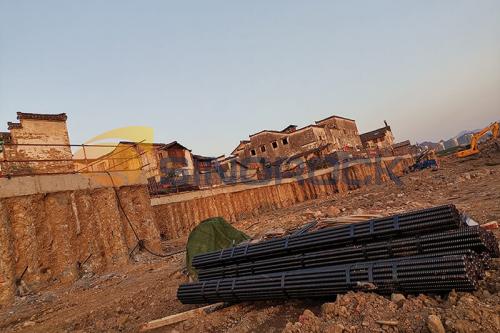
With the increase of construction projects, it is inevitable to encounter sand layer geology during the support construction of some foundation pits. If the traditional support method is still used, the progress of the whole project will be slowed down a lot or even stagnant. It can perfectly solve various problems encountered in traditional support construction. So what are the characteristics of the sand geological structure? What are the problems encountered by traditional support methods? How does the self-drilling hollow bolt solve these problems?
Characteristics of
the geological structure of the sand layer
The
sand layer geology is mostly composed of medium sand and silty sand layers.
Depending on the location of the project, some artificial fill, coarse sand,
and silty clay may also be mixed. The most obvious feature of this kind of
geology is that the soil is soft and easy to collapse.
Problems
encountered by traditional support methods
In
the support construction, the ordinary hollow bolts cannot be constructed at
all when they encounter the sand layer geology that is difficult to form holes
and easy to collapse after the holes are formed. Because the construction
process of the ordinary hollow bolt is to drill first and then grouting, when
the drill pipe is withdrawn, it is likely that the hole will collapse, and the
subsequent bolt cannot be put in, resulting in the entire support construction
cannot continue.
Self-drilling
hollow bolt
Self-drilling
hollow bolt is a kind of high-efficiency supporting material. It consists of
high-strength alloy or all-steel drill bit, hollow bolt body, connecting
sleeve, backing plate, nut and centering device. It integrates drilling,
grouting and anchoring. It is very suitable for drilling construction under geological
conditions that are easy to collapse holes and difficult to form holes. The
self-drilling hollow bolt itself is both a drill pipe and an anchor rod. It
does not need to be pulled out after drilling. After connecting the grouting
machine, the grouting can be grouted from the inside to the outside through the
hollow channel and the drill hole.
Construction
technology of self-drilling hollow bolt
Drilling
Rig Positioning: According to the length and drilling angle of a single
self-drilling hollow bolt, move the special drilling rig for self-drilling bolts
to an appropriate position.
Install the anchor rod and drill bit: according to the geological conditions, select the appropriate drill bit to connect with the hollow anchor rod body, ensure that the end and the tail are clamped and fixed firmly and in a straight line, and the tail end of the anchor rod is connected with the optional grouting adapter and grouting machine. connect. The length of the anchor rod is generally not less than 3 meters, and the clamping distance between the head and tail of the anchor rod is not more than 2 meters, so as to avoid too many joints affecting the connection quality, and the clamping distance is too long during the drilling process. and post-grouting.
Anchor
rod drilling: In order to ensure the direction, slope and accuracy of the
anchor rod, before drilling, the surveyor will stake out the position of the
anchor rod. During the drilling process, check the drilling angle and
direction, and correct the deviation in time.
Grouting:
In sand layer geology, grouting is generally carried out in two steps, the
initial pressure is generally 0.2Mpa ~ 1Mpa, and the water-cement ratio is
about 1:1. When the bolt is drilled to the design depth, the secondary grouting
is carried out. The secondary grouting pressure is 1MPa ~ 2.5MPa, and the
water-cement ratio is controlled between 0.45~0.6:1, so that the grout can
fully fill the rock mass cracks and expand. Anchor radius.
Reinforcement:
Install backing plates and nuts on the exposed section of the self-drilling
hollow bolt close to the rock surface to reinforce the bolt. When the rock mass
is deformed, the deformation force is transmitted to the bolt and the anchor
body through the backing plate and the nut to stabilize the rock mass.
In
the geological construction of sand layer, self-drilling hollow bolts are used
for support, which is simple in construction, high in construction efficiency
and strong in anchoring force. Self-drilling hollow bolts can be used not only
in sandy geological formations, but also in many soft and broken rock
formations, with a wide range of applications.


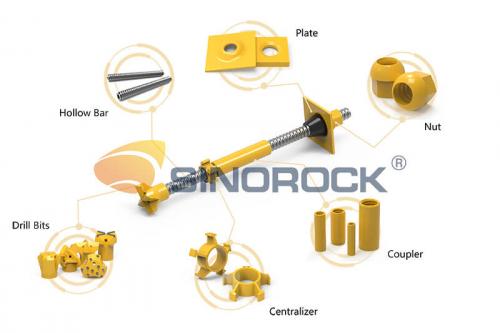
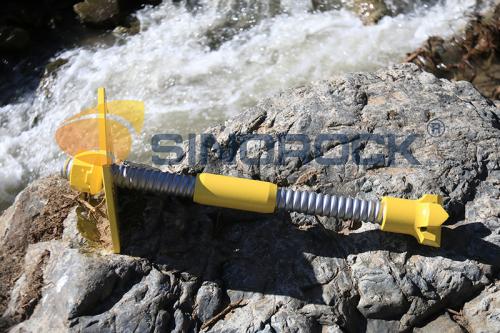
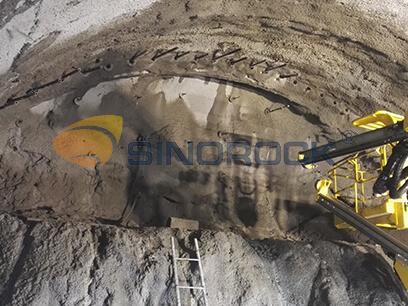
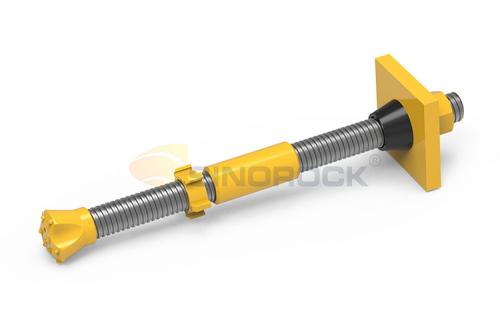
Comments